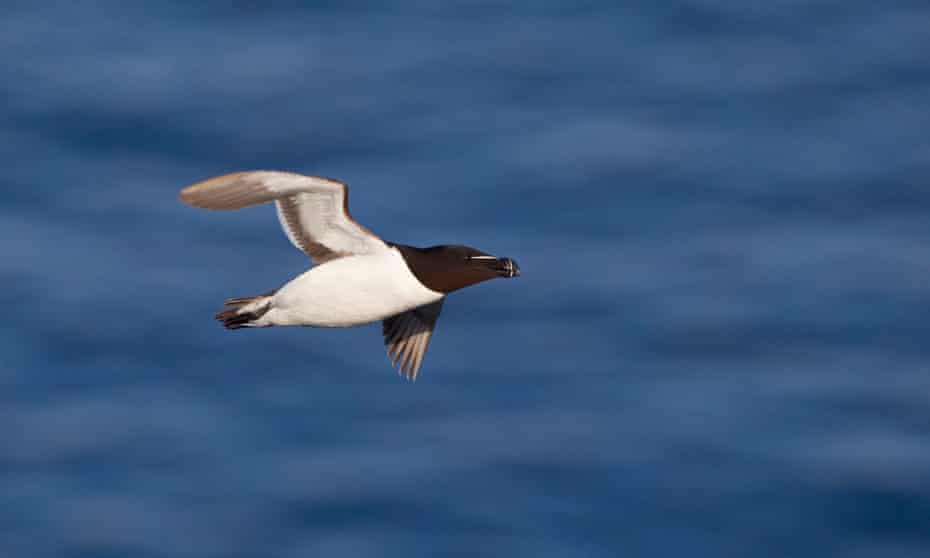Birdwatch: winter brings razorbills out to sea to feed
Out of its breeding plumage, the striking black-and-white bird can be seen diving to catch fish

Seawatching – staring out to sea in the hope that birds will fly past – can be a gruelling pastime, often with little reward for your efforts. But I had high hopes as we set up our scopes on the shingle beach at Cley, soon after dawn on this mild autumn morning. For this site, on the north Norfolk coast, is one of the best places in Britain for seawatching.
We were immediately rewarded with a pale, slender bird just offshore: a red-throated diver, moulting out of its breeding plumage for the winter ahead. Further out, gannets banked above the waves, a flash of black-and-white against the steel-grey seascape.
A tight trio of razorbills – also black and white, with that distinctive heavy bill – bobbed up and down on the surface of the water. In spring and summer, razorbills gather along narrow cliff ledges to breed; for the rest of the year they head out to sea, diving to catch the fish they need to survive.
This year, though, hundreds of razorbills and guillemots have been washed up, dead or dying, along Britain’s east coast. Many have been thin and emaciated, suggesting that food shortages are to blame. But another possibility is that warmer sea temperatures have caused toxic algal blooms to form offshore, poisoning these unfortunate birds.
Yet another example, if any were needed, of the existential crisis that we, and the birds, are facing.